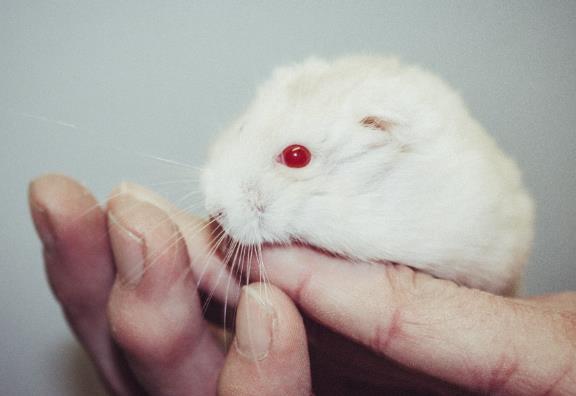Hamsters typically live for 2–3 years, though some breeds—like Roborovski hamsters or Syrian hamsters—may reach 3.5 years, with very few individuals exceeding 4 years. The reasons for their short lifespan stem from a combination of biological mechanisms, reproductive strategies, and care factors, detailed below:

I. Physiological and Metabolic Traits
High Metabolic Rate and Cardiac Stress
Hamsters have an extremely fast heart rate (around 300–500 beats per minute) and a metabolism far quicker than humans. This rapid energy burn accelerates organ wear and tear, shortening the cycle of cell repair and contributing to premature aging.
Size Limitations
Small mammals follow a "metabolic trade-off": smaller bodies correlate with faster energy consumption and shorter lifespans. Hamsters, weighing just 30–150 grams, are naturally constrained by this biological pattern.
II. Costs of Reproductive Strategies
Energy Drain from Breeding
Each litter a female hamster bears can shorten her lifespan by about 3 months. Frequent breeding depletes her physical reserves and accelerates organ decline. Unbred females and male hamsters generally live longer.
High Fertility as Compensation
Hamsters offset their short lives with rapid maturity (around 3 months old) and strong reproductive capacity (4–12 pups per litter). This aligns with the ecological strategy of "high reproduction, low survival."
III. Impact of Care and Management
Environmental Factors
A small cage (less than 47 cm) or poor hygiene can trigger stress-related illnesses.
Extreme temperatures (below 15°C or above 30°C) risk heatstroke or hypothermia.
Dietary Mistakes
Feeding human foods high in salt/sugar, excessive sunflower seeds, or low-quality commercial mixes can cause obesity or metabolic disorders.
Insufficient water or contaminated drinking sources may lead to dehydration or diarrhea.
Common New Owner Errors
These include housing multiple hamsters together (which sparks fights), disturbing them frequently during the day (disrupting their 14-hour sleep needs), and using dusty bedding.
IV. How to Extend a Hamster’s Lifespan
Optimize Living Conditions
Provide a cage of at least 60 cm (larger for Syrian hamsters), along with a running wheel and hiding spots.
Maintain a temperature of 20–26°C and replace bedding regularly.
Scientific Diet
Focus on high-quality commercial hamster food, supplemented with small amounts of vegetables (e.g., carrots, broccoli). Avoid toxic foods like onions.
For senior hamsters (1.5+ years old), offer small, soft pellets.
Health Monitoring
Regularly check for dental issues, weight changes, or coat abnormalities. Seek veterinary care promptly if problems arise.
In summary, hamsters’ short lifespans result from a mix of biological traits and care practices. With science-based management, you can help them reach the upper limit of their natural lifespan.
